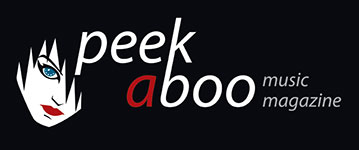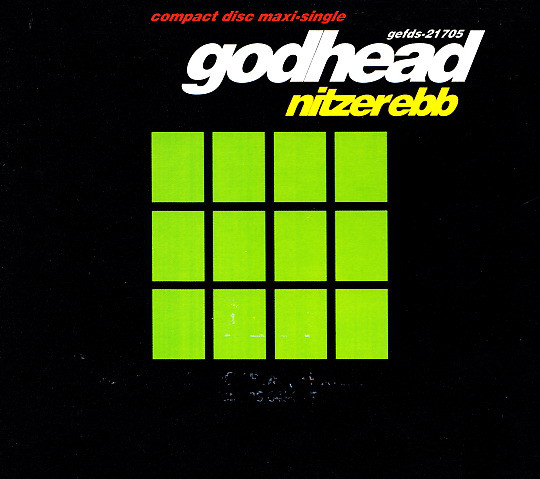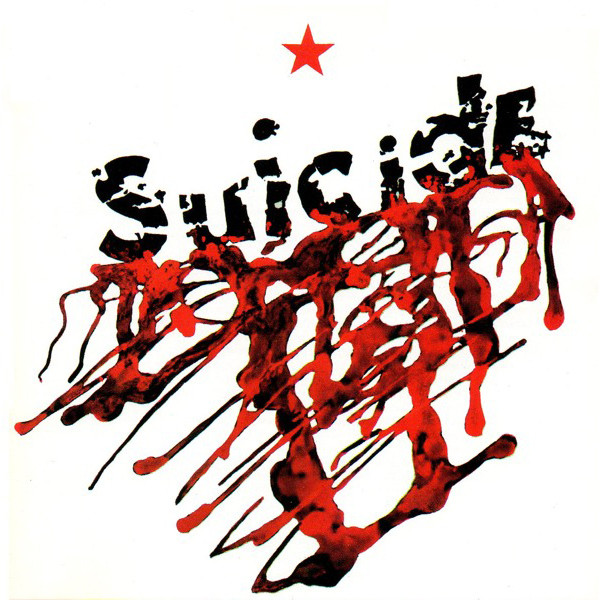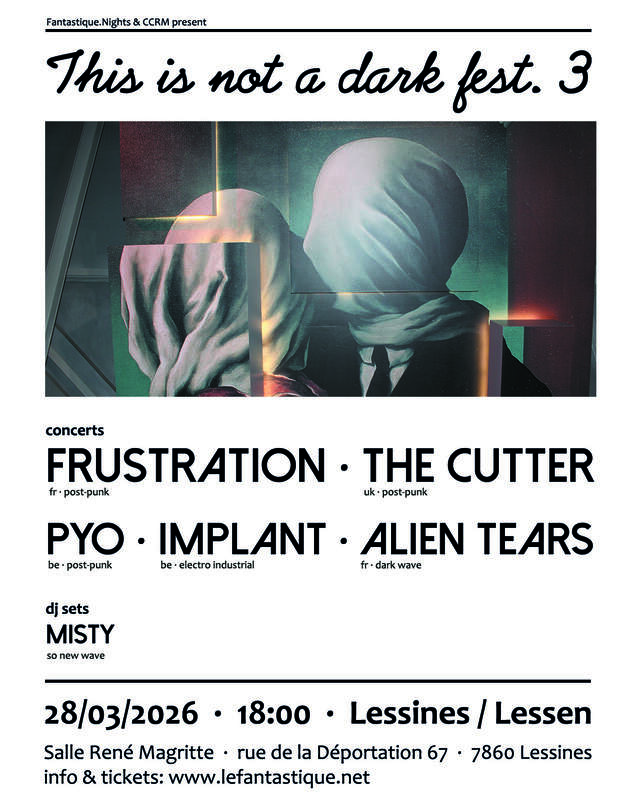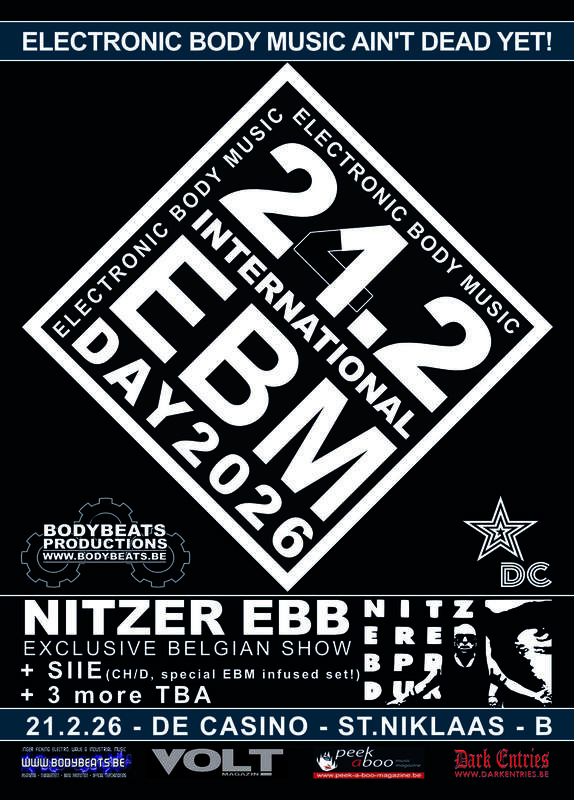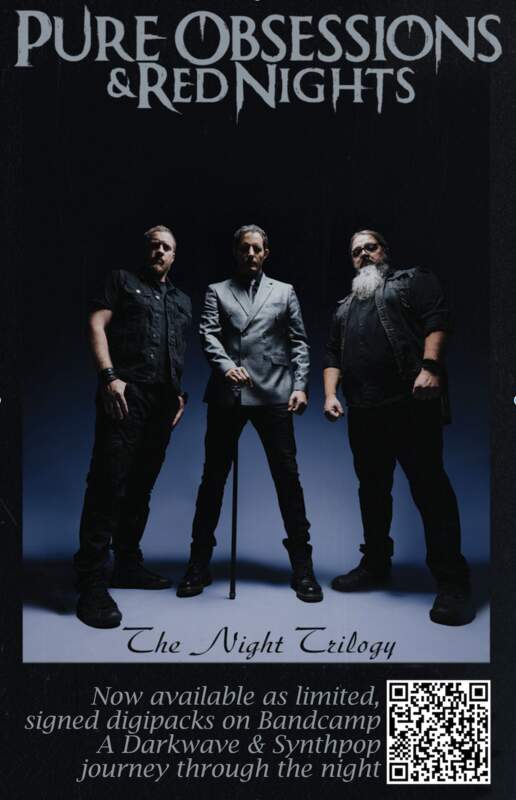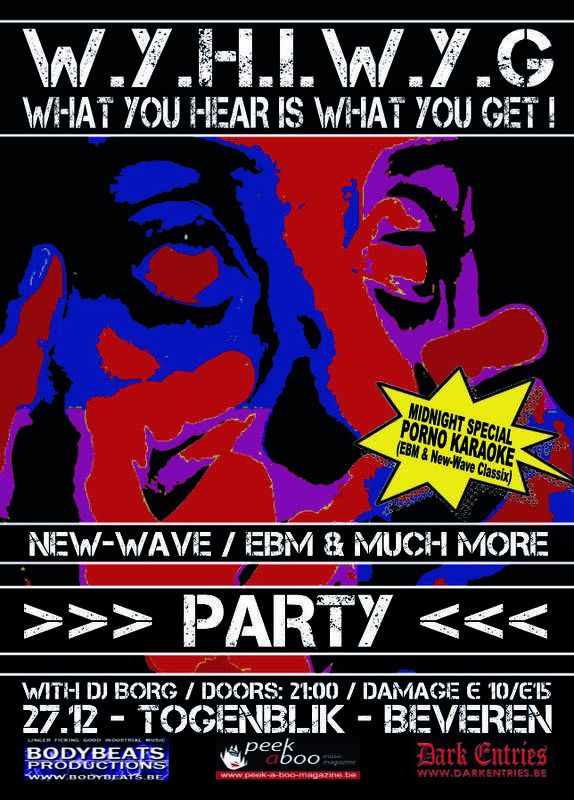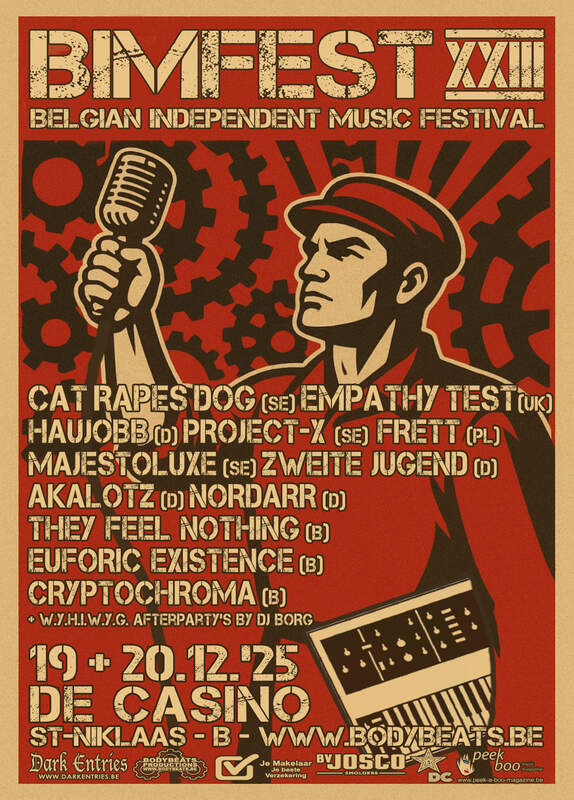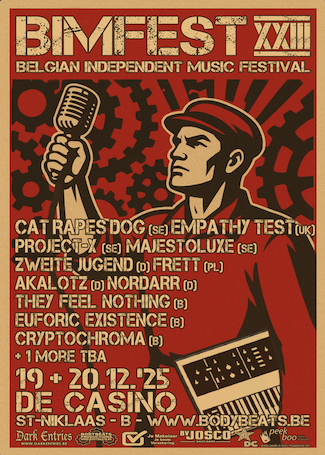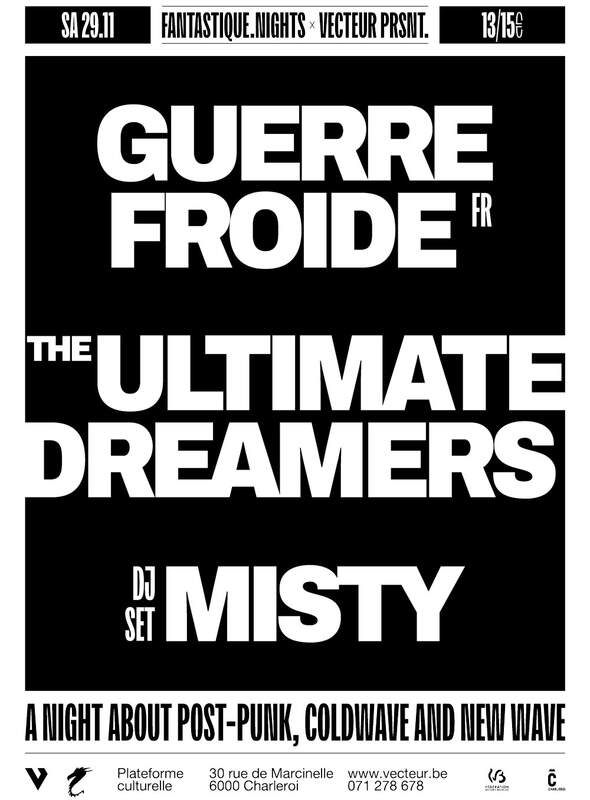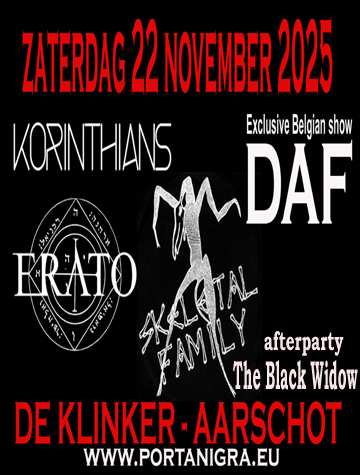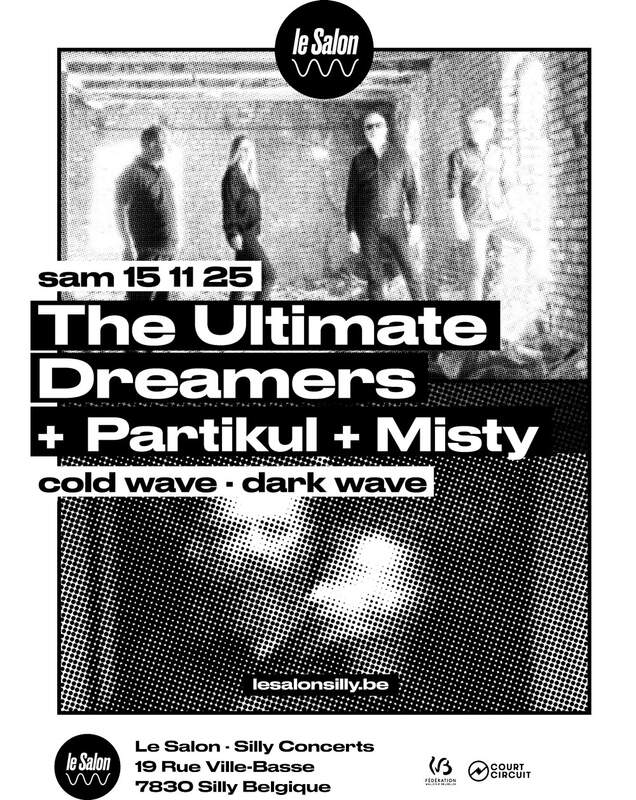Today 34 years ago the British EBM and Industrialists Nitzer Ebb released the single Godhead. This single was taken from their fourth and previously released album EbbHead (Mute Records, September 1991) which was co-produced by Alan Wilder (Depeche Mode) and Flood.
Enjoy the Godhead video below!
Godhead
Hey now, what's this
The place I'm living's a fucking disgrace
Don't talk 'bout that
Get on your knees and pray that you're safe
But what to believe in
It's all so deceivin'
How about something else
The times ain't changing
It's what I been cravin'
How about something else
Where's this I'm at
There's more excitement
At a laundromat
Who's he, mmm looks good
He ain't a god
Well he fucking well should (be)
Now wait a minute, look at that
He's a god without a doubt
Can't you see it in his eyes
Got all of you to despise
And so they came
And they called him Godhead
Cried out his name
And the life that he led
DISCOGS
On this day 42 years ago Suicide released its self titled debut studio album. It was released on 28 December 1977 by Red Star Records and was produced by Craig Leon and Marty Thau. The album was recorded in only four days at Ultima Sound Studios in New York and featured Martin Rev's minimalist electronics and harsh, repetitive rhythms, paired with Alan Vega's rock and roll-inspired vocals and depictions of urban life. Suicide entered the studio with much of their songs already written and rehearsed from having spent the previous five years playing shows.
Suicide was the first group to sign to Marty Thau's Red Star record label. After hearing a demo tape from Suicide, he asked if he could see Suicide perform live which led to them being signed to Red Star.
Upon its initial release, Suicide was granted positive reception from the UK press, but received mixed reviews in the United States where it failed to chart. However, the album would soon be regarded as a milestone in electronic and rock music. In 2013, Pitchfork magazine named it one of the greatest albums of the 1970s and Rolling Stone magazine placed it on their list of the 500 greatest albums of all time. The album is listed as one of the 1001 Albums You Must Hear Before You Die.
Musically, Suicide has been described as synth-punk, electronic rock and synth-pop, while also being labeled electronic and minimalistic.
Suicide (Original album track listing)
Side one:
- Ghost Rider 2:34
- Rocket U.S.A. 4:16
- Cheree" 3:42
- Johnny 2:11
- Girl 4:05
Side two
- Frankie Teardrop 10:26
- Che 4:53
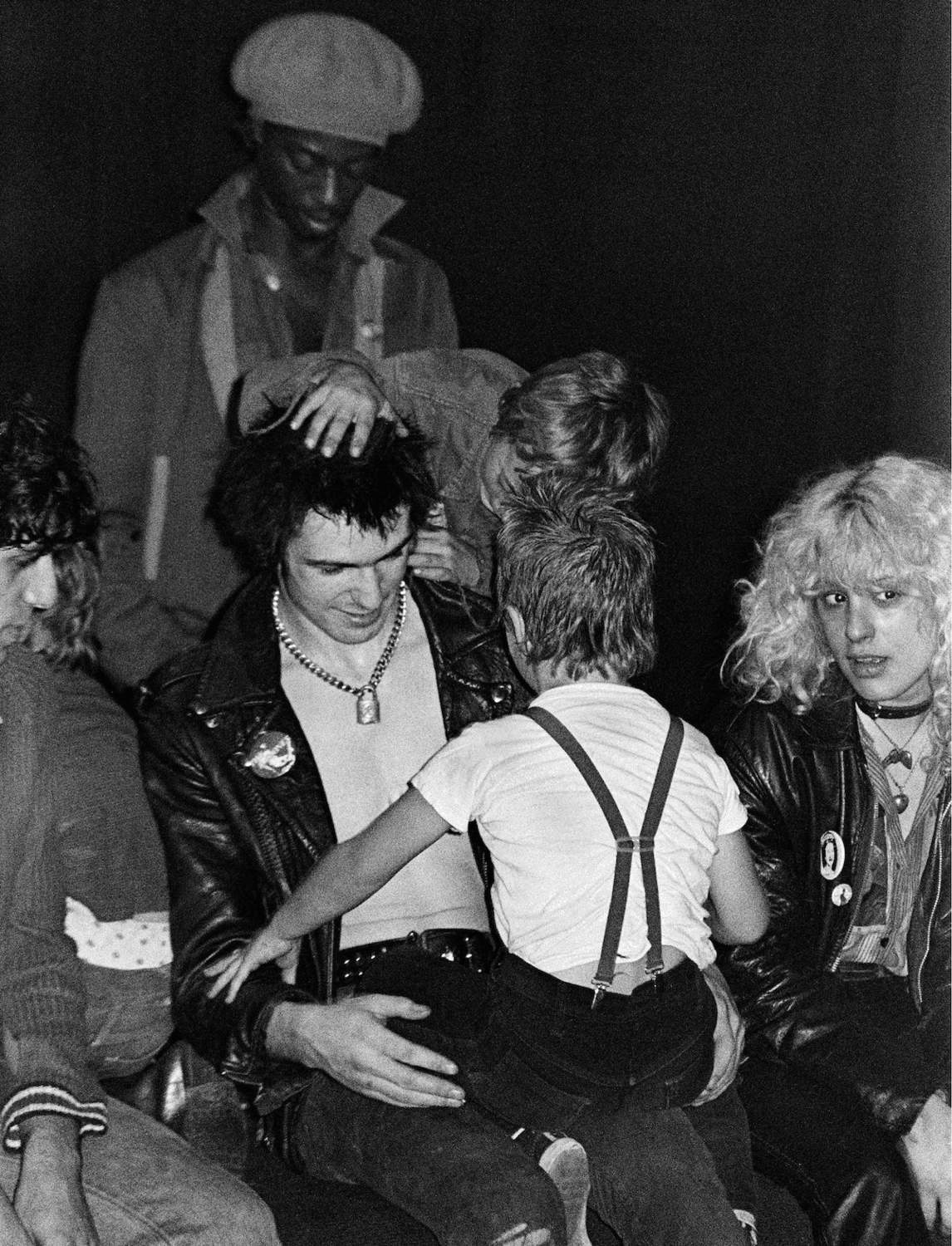
SID VICIOUS, A Christmas Story | 48 Years Ago The Pistols Deliver Christmas!
John Simon Ritchie, a name which will mean very little to people, bring little thought or judgement, however, his stage name or rather nickname does in Sid Vicious.
Immediately there is a violent thought, there are the thoughts of suicide, murder and perhaps a one of pity.
Some of these thoughts, especially the one of him committing a murder may not be fully true, but there is the violence, yes, there was a violent persona especially in his image, his self harm on stage and if you believe Nick Kent the way Sid could swing a bicycle chain.
But that is one view if you see the footage of the Sex Pistols playing a gig in Huddersfield, West Yorkshire, England on Christmas Day 1977 you get a totally different view.
In that year over 30,000 firefighters went on strike across England over unfair pay claims and conditions of work, although they were still answering emergency calls, the army was called in to handle everything else.
That Christmas the children of the firefighters were suffering as a result and so we have the most unlikely of events triggering and one which was going against the grain of the populist idea created by the press of the day.
The Sex Pistols played for the children of the striking firemen on that Christmas Day, now you start to come away with a very different image and idea.
Whereas the survivor footage shows, Sid Vicious dancing and laughing with children and having food fights, all good fun and all natural for a young twenty-year old man.
Seems very implausible that the anti-establishment, anarchists of rage the Sex Pistols could play the part of Santa Claus ,but they did.
What is more significant was, this occasion was the last time The Sex Pistols played in the UK with Sid Vicious, within three-weeks the band had imploded on the first leg of their tour of the United States.
Stories of good nature are not usually associated with Sid Vicious or the Sex Pistols, if there are such stories similar to this they have been buried underneath by the tabloid jewels of hate, but very soon you realise that they were victims of their own image, where the part they were playing took over the person they were and this is very true for young John Simon Ritchie.
Photo © Ray Stevenson
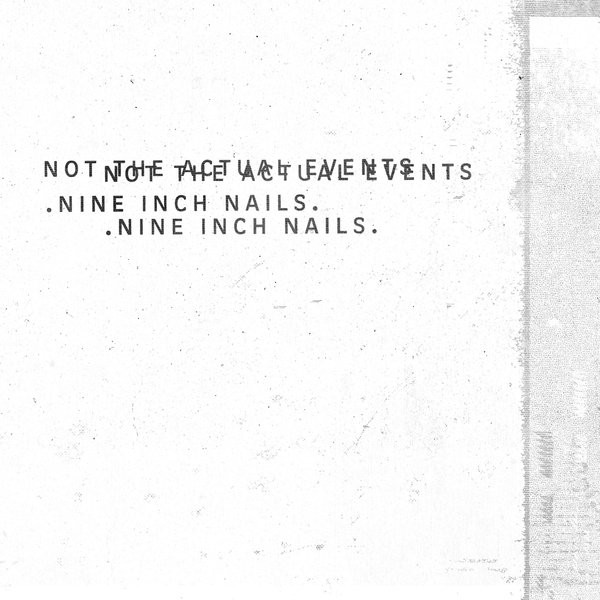
On this day, 9 years ago, Nine Inch Nails released 'Not the Actual Events'.
On this day, 9 years ago, Nine Inch Nails released Not the Actual Events (December 23rd, 2016), an EP released on Trent Reznor's own label The Null Corporation. On this EP Trent worked together with long-time collaborator Atticus Ross, his wife Mariqueen Maandig (How to Destroy Angels), Dave Navarro (Jane's Addiction / Red Hot Chili Peppers) and Dave Grohl (Nirvana / Foo Fighters).
Not the Actual Events is meant to be the first part of a EP trilogy. In July 2017 the second part Add Violence was released while the announcement for release from the third and final EP can be expected any day now.
The overall sound on this EP reminds to the 1990's sound of Nine Inch Nails’s, electronics, distorted bass, noisy guitars and of course one of Trent's most recognizable trademarks... The nostalgic piano tunes.
Reznor himself described the record as “an unfriendly, fairly impenetrable record that we needed to make.”
Tracklist
1. Branches/Bones
2. Dear World
3. She's Gone Away
4.The Idea of You
5. Burning Bright (Field on Fire)
All tracks written by Trent Reznor and Atticus Ross.
www.nin.com
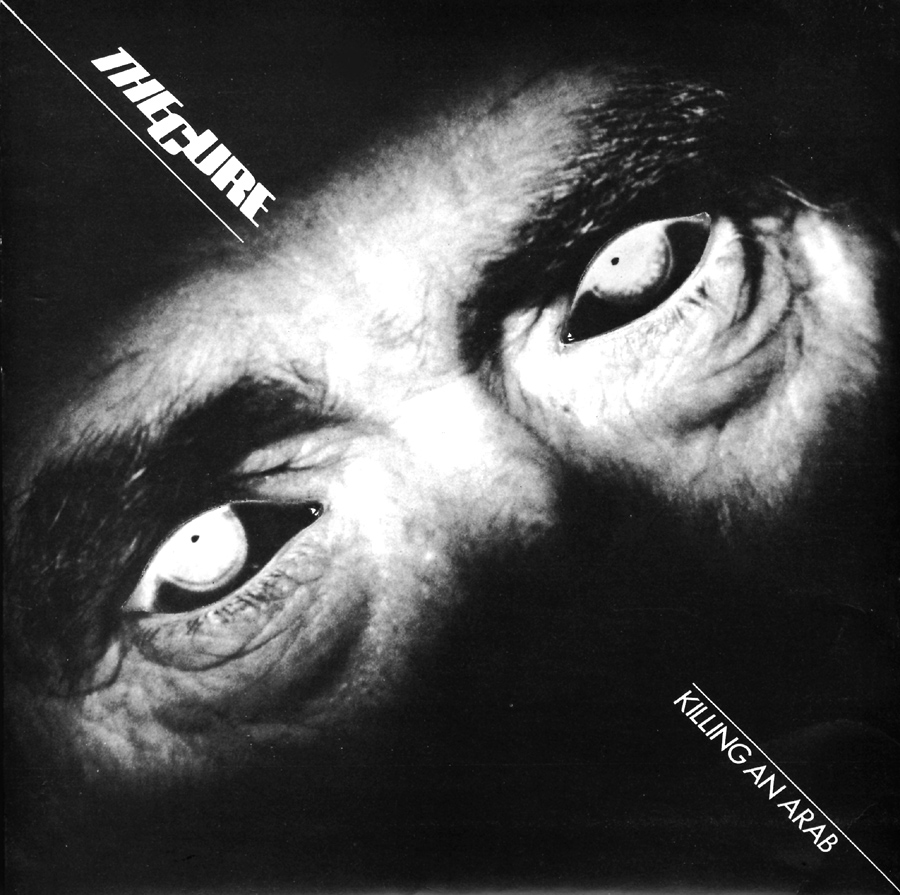
On this very day, 46 ago, The Cure released their very first 7' single 'Killing An Arab'.
"Killing an Arab" is the first single by the Cure. It was recorded at the same time as their first album Three Imaginary Boys (1979), but not included on the album. However, it was included on the band's first US album, Boys Don't Cry (1980).. It was inspired by the pivotal moment in the 1942 novel The Stranger by Albert Camus where the protagonist shoots his friend’s mistress' brother, a man identified in the book only as ‘the Arab’. It is the apathy of the main character that is the focus of this song.
The song has been controversial since 1979, when a college asked the band not to perform it as it sounded racist.
Shortly after its release, Smith said, "It just happened that the main character in the book had actually killed an Arab, but it could have been a Scandinavian or an English bloke."
In 1986, its inclusion on the band’s singles collection Standing On A Beach was protested by the American-Arab Anti-Discrimination Committee. A compromise was reached when the band agreed to label each unit with a sticker announcing the following:
The song ‘Killing an Arab’ has absolutely no racist overtones whatsoever. It is a song which decries the existence of all prejudice and consequent violence. The Cure condemn its use in furthering anti-Arab feeling.
In 1987, Smith shared his opinion of the controversy in a fanzine:
i felt the whole ‘issue’ absurd and unnecessary and i am relieved that it has been concluded (and forgotten?) imaginatively and intelligently and with mutual satisfaction….(almost…)
In 1991, this song (along with “Rock The Casbah” by The Clash) unofficially became war-rallying cries for the US invasion of Iraq, much to the band’s dislike.
In 2003, Smith acknowledged that, "If I knew it before, I would have called it 'Standing on the Beach'. It would have avoided many troubles."
In 2016, Lol Tolhurst was asked if he thought releasing “Killing An Arab” as the band’s first single was a bold move. He responded:
I didn’t think it was so bold back when we wrote it. It was about alienation and existentialism – things more relevant to us then. Obviously events of the last two decades have changed the perception of the song’s meaning. Totally erroneously I might add, as it has nothing to do with racism or killing at all.
Killing An Arab (Tracklist 7")
A. Killing an Arab
B. 10:15 Saturday Night
The Cure (1979):
Michael Dempsey – bass guitar
Robert Smith – guitar, vocals
Lol Tolhurst – drums

